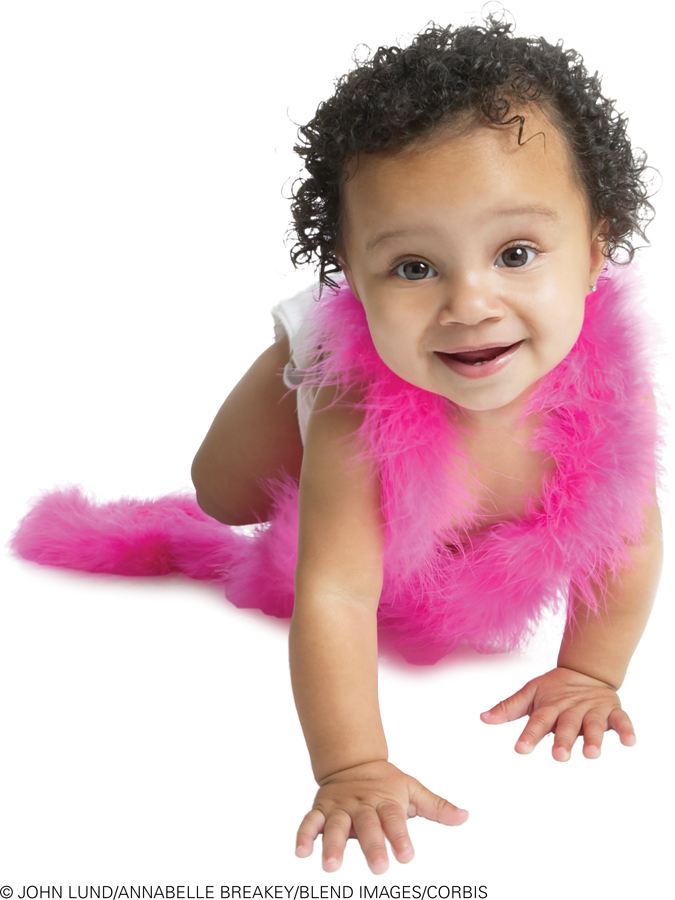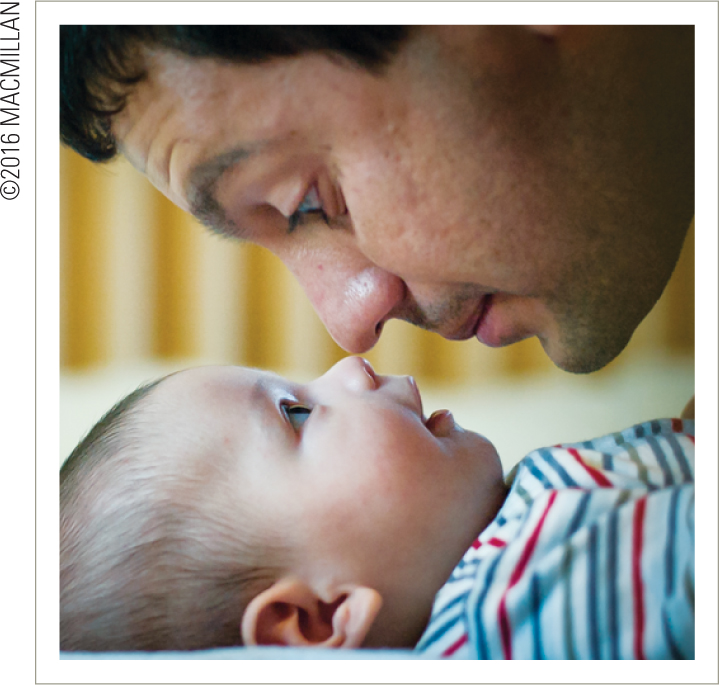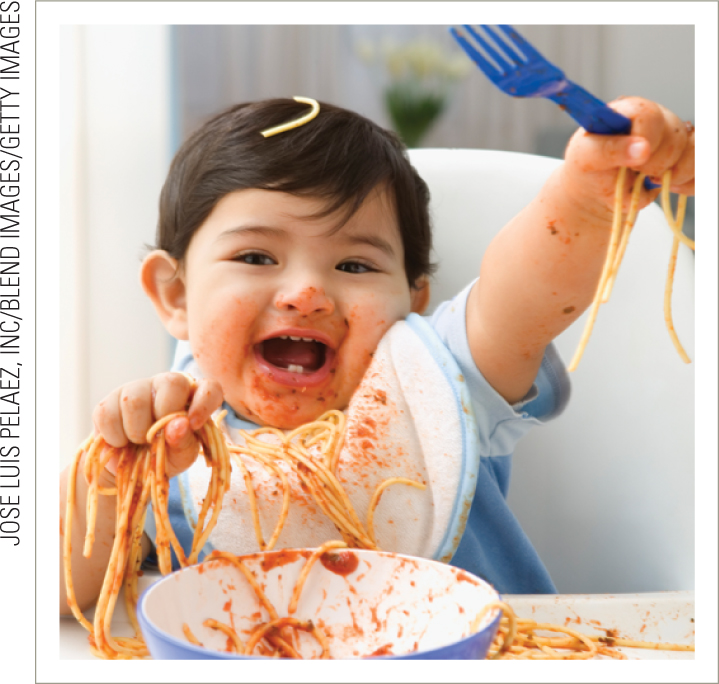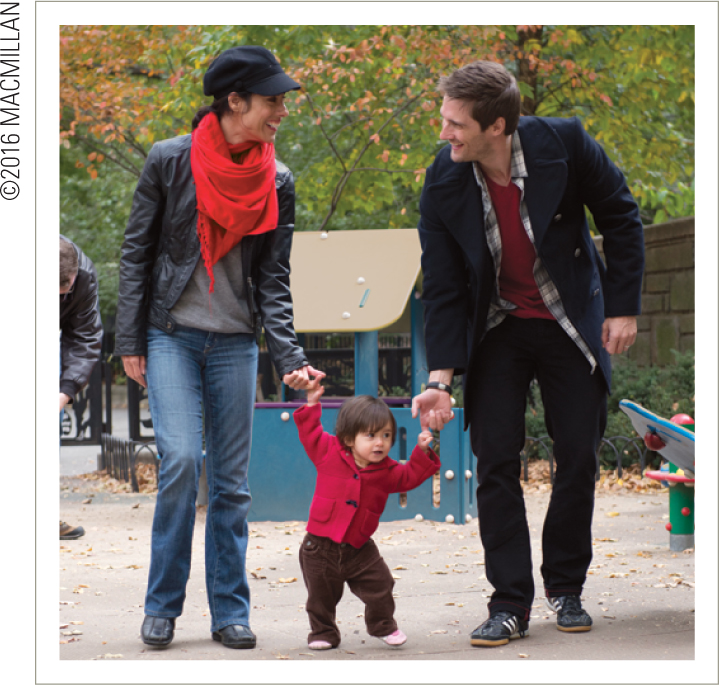PART 2: The Developing Person So Far: The First Two Years
|
PART 2 The Developing Person So Far The First Two Years |

|
PART 2: The Developing Person So Far: The First Two Years

BIOSOCIAL
Body Changes and Brain Development Over the first two years, body weight quadruples and brain weight triples. Connections between brain cells grow dense, with complex networks of dendrites and axons. Neurons become coated with myelin, sending messages more efficiently. Experiences that are universal (experience-
Perceiving and Moving Brain maturation underlies the development of all the senses. Seeing, hearing, and moving progress from reflexes to coordinated voluntary actions, including focusing, grasping, and walking. Culture is evident in sensory and motor development: Brain networks respond to the particular experiences of each infant’s life.
Surviving in Good Health Infant health depends on immunization, parental practices (including “back to sleep”), and nutrition. Breast milk protects health and has so many other benefits that the World Health Organization recommends exclusive breast-

COGNITIVE
Sensorimotor Intelligence and Information Processing As Piaget describes it, in their first two years infants progress from knowing their world through immediate sensory experiences to “experimenting” on their world through actions and mental images. Information-
Language Interaction with responsive adults exposes infants to the structures of communication and language. By age 1, infants usually speak a word or two. By age 2, language has exploded: Toddlers talk in short sentences and add vocabulary each day. Language develops through reinforcement, neurological maturation, and social motivation; all three processes combine to create a very conversational toddler.

PSYCHOSOCIAL
Emotions Emotions are a newborn’s simple reactions, but by age 2 a toddler’s emotions have developed into complex, self-
The Development of Social Bonds Parents and infants respond to each other by synchronizing their behavior. Toward the end of the first year, secure attachment to the parent sets the stage for the child’s increasingly independent exploration of the world. Insecure attachment—